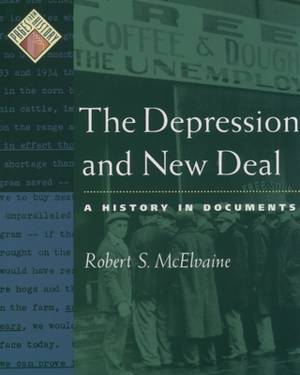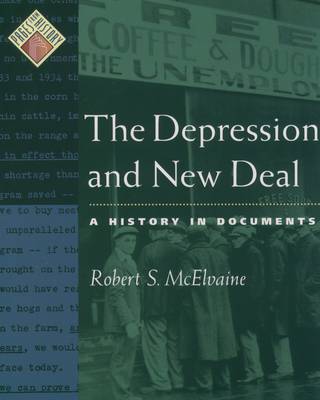
- Retrait gratuit dans votre magasin Club
- 7.000.000 titres dans notre catalogue
- Payer en toute sécurité
- Toujours un magasin près de chez vous
- Retrait gratuit dans votre magasin Club
- 7.000.0000 titres dans notre catalogue
- Payer en toute sécurité
- Toujours un magasin près de chez vous
Description
The Depression and New Deal is a collection of primary sources documenting American life during the longest and deepest economic collapse in American history. From the prosperity and rampant consumerism of the 1920s, the book moves forward to cover the double shock of the stock market crash and dust bowl and then on to the recovery efforts of Roosevelt's New Deal. Some of the most revealing testaments to the times-including songs by Woody Guthrie, articles from sources as diverse as Fortune magazine and the communist periodical New Masses, murals and posters sponsored by the Works Progress Administration, excerpts from literary classics such as The Grapes of Wrath and selections from Eleanor Roosevelt's "My Day" column-have been assembled to provide a well-rounded portrait of the age. The battle among conflicting political and economic forces is brought to life with political cartoons, Roosevelt's "Forgotten Man" radio address and first inaugural address, Supreme Court decisions, newspaper editorials, text from the National Labor Relations Act, and many other documents. Some of the most compelling elements of this history record the impact of the depression on ordinary people. The experiences of Americans of both sexes, all ages, and various racial and ethnic groups are explored through documents such as Farm Security Administration photographs, interviews, letters to the Roosevelts, and the memoirs of a "southern white girl." A special section of Hollywood film stills demonstrates how the changing values of the nation were reflected in popular culture. Renowned historian Robert McElvaine provides expert commentary linking the documents into a fascinating and seamless narrative. Textbooks may interpret history, but the books in the Pages from History series are history. Each title, compiled and edited by a prominent historian, is a collection of primary sources relating to a particular topic of historical significance. Documentary evidence including news articles, government documents, memoirs, letters, diaries, fiction, photographs, and facsimiles allows history to speak for itself and turns every reader into a historian. Headnotes, extended captions, sidebars, and introductory essays provide the essential context that frames the documents. All the books are amply illustrated and each includes a documentary picture essay, chronology, further reading, source notes, and index.
Spécifications
Parties prenantes
- Auteur(s) :
- Editeur:
Contenu
- Nombre de pages :
- 192
- Langue:
- Anglais
- Collection :
Caractéristiques
- EAN:
- 9780195166361
- Date de parution :
- 12-06-03
- Format:
- Livre broché
- Format numérique:
- Trade paperback (VS)
- Dimensions :
- 203 mm x 255 mm
- Poids :
- 408 g

Les avis
Nous publions uniquement les avis qui respectent les conditions requises. Consultez nos conditions pour les avis.






